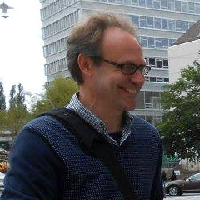
Title: Potential of advanced membrane materials as alternative barriers against virus
Keynote Talk
Dr. Per A. Löthman
Foviatech GmbH, Hamburg, Germany
Abstract
The use of membranes for preventing viruses has gained a renewed interest with the COVID 19 pandemy.There are many facial masks materials with different efficiency to remove virus,bacteria and particulates as well as acting as fluid barriers. The main goal of this work is to analyse how different materials can be used as a barrier to virus. It seems that the use of nanofiber as materials for faced masks has shown the most effective morphological setup. The tortuosity of such materials can be improved in order to attain higher prevention to the permeation of aerosols with particle size rangingfrom 2-3 mm. Although N95 seems to be very effective as barrier to prevent the SARS- COV-2 transmission, the widespread use of cloth masks should be investigated. There are some important advantages of using such material as price, biodegradability and confort. However, theincrease in the barrier properties (selectivity) can be improved by means of multilayer devices. The development of a mass transfer model to describe such systems was evaluated in order to address how many layers would be viable to increase the material resistance to virus, respiratory droplets and aerosols. Besides, the possibilities of functionalization to improve the selectivity as well as the increase in acceptability such as adding scent to the mask are discussed. It is worth noting that the reusability of such membranes are one of the most important variables to be considered.
Biography
Dr. Per A. Löthman obtained his Ph.D. degree from Twente University , The Netherlands in the field of Macroscopic Magnetic Self-assembly and conducted research in Canada, France and Germany on carbon nanotubes, Graphen and related nanomaterials. His research is interdisciplinary and involve BioNanotechnology including DNA, S-layers, Viruses (archaea, bacteriophages), Biomolecular Architecture. Botany and functional surfaces. Dr. Löthman has published over 70 scientifical articles, several book chapters and serves as a reviewer for several journals such as Nature, Nature Materials, Journal of Bioanalytical and Analytical Chemistry, Journal of Colloid and Interface Science, Thin Solid Films, Sensors and Actuators, Microsystems Technologies, Biophysical Reviews and Letters, He is Senior Research Scientist at Foviatech GmbH in Hamburg, Germany, a young innovative high-tech company in the field of advanced materials and artificial intelligence, and a senior lecturer in Nanomedicine, Nanopharmacy and Nanomaterials (Kaiserslautern University) and Mechatronics Systems and Design (Hamburg University), Germany and Manufacturing Engineering, HTW Berlin, Germany Kátia Cecília de Souza Figueiredo has completed her PhD from the Chemical Engineering Program, Federal University of Rio de Janeiro, Brazil. She has been woking as a Professor in Chemical Engineering Department, Federal University of Minas Gerais since 2010.
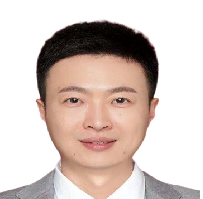
Title: Beyond Octave-Spanning Nonlinear Spectral Broadening in Silicon Nitride Slot Waveguide
Plenary Talk
Prof. Yang Yue
Xi'an Jiaotong University, China
Abstract
Photonic integrated circuits (PICs) have attracted much interest in terms of large-scale integration, small footprint, lower energy consumption and cost. Among different nonlinear platforms, silicon nitride (Si3N4) is a promising one since its compatibility with the CMOS technology, and the reasonably high Kerr nonlinearity. Moreover, two-photon absorption (TPA) of Si3N4 is negligible, which is more sutible for high power system. Slot waveguides provide an additional tuning knob to tailor various properties for on-chip elements, including dispersion manipulation. The dispersion engineering provides a good chance to generate various nonlinear phenomenon.
In this talk, we will review our recent work on nonliner spectral broadening in Si3N4 slot waveguide. First, we investigate the supercontinuum generation in the Si3N4 slot waveguide with flat and low all-normal dispersion over a 3270-nm wavelength range from 1170 to 4440 nm, covering a 1.9-octave bandwidth. A three-octave highly coherent supercontinuum from 504 to 4229 nm can be generated using a 5-mm long waveguide, by launching a 100-fs 90-kW hyperbolic secant input pump pulse. Second, we illustrate the flexibility of dispersive waves (DWs) generation in the Si3N4 slot waveguide. We demenstrate the ability to form two DWs, in which the long-wavelength DW can cover up to 4500 nm by pumping in the telecommunication band. The corresponding spectrum can extend from 500 to 4500 nm with high coherence. A highly efficient nonlinear conversion is realized over a fairly broad band through this approach.
Biography
Yang Yue received the Ph.D. degree in electrical engineering from the University of Southern California, USA, in 2012. He is a Professor with the School of Information and Communications Engineering, Xi'an Jiaotong University, China. Dr. Yue’s current research interests include intelligent photonics, optical communications and networking, optical interconnect, detection, imaging and display technology, integrated photonics, free-space and fiber optics. He has published over 200 peer-reviewed journal papers (including Science) and conference proceedings with >9,000 citations, four edited books, >50 issued or pending patents, >100 invited presentations (including 1 tutorial, 5 plenary and 31 keynote talks). Dr. Yue is a Senior Member of the Institute of Electronic and Electrical Engineers (IEEE). He is an Associate Editor for IEEE Access, and an Editor Board Member for three other scientific journals. He also served as Guest Editor for eight journal special issues, Chair or Committee Member for >60 international conferences, Reviewer for >60 prestigious journals.

Title: Aerogels: Sol-Gel Chemistry, Properties and Applications
Keynote Talk
Dr. Vinayak G. Parale
Yonsei University, South Korea
Abstract
Aerogels are considered as promising nanomaterials due to their excellent properties such as high specific surface area, low thermal conductivity, low density, and high porosity, known as eminent candidate for future material technology. Aerogels have a structure containing nano-sized pores and their pore size, pore distribution (regular/irregular, open/close), and pore shape, which can be controlled during sol-gel procedure. The outstanding properties of aerogels open the way for some potential applications, such as, thermal insulation systems, aeronautical domains, environmental clean-up and protection, heat storage devices, transparent windows, insulating paints and so on. Among these applications, thermal insulating materials can play a vital role in living systems and for saving energy in various domestic and industrial processes. But inorganic aerogels such as silica are brittle in nature, which constrains their large scale-application. To overcome this limitation, this presentation also focuses on the enhancement of mechanical characteristics of inorganic aerogels using hybridization with other materials. This presentation introduces a preparation of aerogel materials, their properties and applications.
Acknowledgments: This work was supported by the National Research Foundation of Korea(NRF) grant funded by the Korea government(MSIT) (No. 2020R1A5A1019131).
Biography
Dr. Vinayak G. Parale is currently working as a Research Professor in Department of Materials Science and Engineering, Yonsei University, South Korea. He received the B.Sc. degree (Physics) from Shivaji University, Kolhapur, India in 2008, the M.Sc. degree (Solid State Physics) from Shivaji University, Kolhapur, India in 2010, and Ph.D. degree (Physics) from Shivaji University, Kolhapur, India in 2013. He worked as a Lecturer in Sanjay Ghodawat Polytechnic, Kolhapur (June 2013-Feb 2015) and as an Assistant Professor in Engineering Physics at Rajarambapu Institute of Technology, Islampur (March 2015-May 2016). In June 2016, he joined Department of Materials Science and Engineering, Yonsei University, South Korea. He served as BK 21 Postdoctoral Fellow (2016-2018) and BK 21 Research Professor (2018-2019). At present, he is working as a Research Professor at the same department in the Aerogel Materials Research Centre, Yonsei University, South Korea. His current research interests include porous materials, aerogels, functional materials, energy storage and conversion, photocatalysis. Till now, he has published 2 international books, 73 international papers, and actively participated in more than 30 national/international conferences and symposiums. He received various awards and prizes. Additionally, he gave invited talks in various conferences and colleges. He has been served as a guest editor in MDPI polymers journal, and presently serving as a recognized reviewer in more than 30 International peer reviewed journals.

Title: Resolution of the cationic distribution in Cu22Fe8Ge4S32 by synchrotron resonant powder diffraction: A case study and guidelines for analogous compounds
Invited Talk
Laura Paradis-Fortin
Academia Sinica, Taiwan
Abstract
Here we present a method for the determination of cationic distribution in sulfur materials, a promising class of materials with great perspective for thermoelectric generators. The method is based on the use of neutron and X-ray resonant diffraction in a combinatorial approach. All possible cationic configurations respecting periodicity are tested automatically on a group of diffraction patterns with alternative set of scattering function/length. In order to illustrate this approach, the case of synthetic Germanite (Cu22Fe8Ge4S32), a Cu-rich sulfide mineral, structurally related to the high performance thermoelectric colusite, is presented. Its cationic distribution is still not defined due to, on one hand, the similarity of Cu, Fe and Ge elements for X-rays, and on the other hand, the number, symmetry equivalence and mix occupation of the cationic sites. Using such method in complementarity with single crystal X-rays diffraction and 57Fe Mössbauer spectroscopy it was possible to propose only 2 structural models compatibles with all experimental results among the » 18 000 possible models. This approach can be in principle extended to other class of compounds if certain symmetry prerequisite are satisfied.
Biography
Laura Paradis-Fortin is an ambitious and highly motivated postdoctoral researcher working on the development of new thermoelectric materials. During her Ph. D. in collaboration between CRISMAT (Caen, France) and ISCR (Rennes, France), she worked on the synthesis and processing of chalcogenide materials. She has a particular interest in crystal structure and the structure-properties relationship. In her current position at National Taiwan University she continue to use her crystal structure approach to study half-Heusler materials
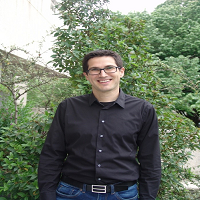
Title: Nanomaterials for biomedical imaging and cancer radiotherapy
Keynote Talk
Dr. Gerard Tobias
(ICMAB-CSIC), Barcelona, Spain
Abstract
The application of nanotechnology to medicine (nanomedicine) has become one of the most promising routes for the targeted diagnosis and treatment of diseases. The small size of nanomaterials, large surface area and high reactivity impart unique physicochemical properties to these materials, in such a way that several therapeutics based on nanomaterials have been approved for clinical use in the past few years. However, there are still several limitations that need to be overcome to obtain novel and efficient nanocarriers. We have shown that it is possible to achieve ultra-sensitive imaging and the delivery of an unprecedented amount of radiodose density using nanocarriers. Furthermore, functionalization of the external surface of nanocarriers with chosen targeting ligands allows selective internalization in cancer cells. The developed nanocarriers present a high in-vivo stability and have shown to also allow tumor radiotherapy.
Biography
Gerard Tobias obtained the degree in Chemistry (with Honours) from the Autonomous University of Barcelona (2000), Master in Materials Science and Ph.D. with European mention (UAB, ICMAB, 2004). He was a research visitor at Ames Laboratory (USA) and EMAT (Belgium). Between 2004-2009 he was a postdoctoral researcher at the University of Oxford (UK). Since 2009 he leads research on "Nanoengineering of Carbon and Inorganic Materials" at the Materials Science Institute of Barcelona (ICMAB-CSIC). Dr. Tobias has coordinated the FP7 European network RADDEL and has been granted an ERC Consolidator Grant (NEST, 725743).

Title: Electrically conducting micropolar nanofluid with heat source/sink over a wedge: Ion and Hall currents
Keynote Talk
Prof. J.C. Umavathi
Gulbarga University, India
Abstract
A theoretical exercise is conferred for the magneto-micropolar nanofluid layer flow past a wedge surface by virtue of its numerous fundamental problems which arise in nanotechnology, chemical engineering, polymers etc. The model exemplify an isothermal wedge surface. The fluid is incompressible, viscous, electrically conducting and carrying ion slip and Hall currents with source or sink. The Eringen micropolar model is set up for rheological properties of the nanofluid. A Tiwari-Das nanoscale formulation is utilized in order to study specific nanoparticles and base fluids. The dimensionless transformed, coupled momentum, angular momentum (micro-rotation) and thermal perimeter layer equations are solved with the efficient MATLAB bvp4c numerical scheme. Validation with earlier studies is conducted. The influence of Hartman number skin friction function and Nusselt number function are visualized graphically and in tables. The magnetic effects supports the transverse, horizontal velocity and temperature but suspends the angular velocity. Optimum rate of heat transfer is procured with iron oxide nanoparticles dropped in water and copper nanoparticles hanging in engine-oil
Biography

Title: Multicomponent High-Entropy Cantor alloys
Plenary Talk
Prof. Brian Cantor
Brunel University, UK
Abstract
All human advances have depended on making new materials, and all materials are alloys, i.e. mixtures of several different starting materials or components. So the history of the human race has been the continued invention of new materials by discovering new alloys. Recently a new way of doing this, by manufacturing multicomponent high-entropy alloys, has shown that the total number of possible materials is enormous, even more than the number of atoms in the galaxy, so we have lots of wonderful new materials yet to find. And multicomponent phase space contains a surprisingly large number of extended solid solutions. The first group of these which was discovered are called Cantor alloys, an enormous composition range with a single-phase fcc structure, based loosely on the original equiatomic five-component Cantor alloy CrMnFeCoNi. This talk will discuss the previous history of alloying, the discovery of multicomponent alloys, the structure of multicomponent phase space, the fundamental thermodynamics of multicomponent solid solutions such as the Cantor alloys, the complexity of local atomic and nanoscale configurations in such materials, the effect of this on properties such as atomic diffusion, dislocation slip, and the resulting outstanding mechanical properties and potential applications as low and high temperature, radiation and corrosion resistant and recyclable materials.
Biography
Brian Cantor is an Emeritus Professor in the Department of Materials at the University of Oxford and a Research Professor in the Brunel Centre for Advanced Solidification Technology at Brunel University. He was previously Vice-Chancellor of the University of York and of Bradford University, Head of Mathematical and Physical Sciences at the University of Oxford, a research scientist and engineer at General Electric Research Labs in the USA, and worked briefly at Banaras Hindu University, Washington State, Northeastern, IISc Bangalore and the Kobe Institute. He founded and built up the World Technology Universities Network, the UK National Science Learning Centre, the Hull-York Medical School, and Oxford’s Begbroke Science Park. He was a long-standing consultant for Alcan, NASA and Rolls-Royce, and editor of Progress in Materials Science. He invented the new field of multicomponent high-entropy alloys and discovered the so-called Cantor alloys.
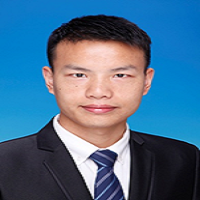
Title: Electronic Grade 2D films for Emerging Micro-Devices Applications
Invited Talk
Xiangming Xu
(KAUST), Saudi Arabia
Abstract
Enlarging 2D materials from small 2D flakes to large-area films remained with high-quality electronic grade level is the precondition for the scalable application of 2D materials in the semiconductor industry. Our group sucessfully synthesized wafer-scale mono-oriented 2D semiconducting TMDCs (transition metal dichalcogenides) through epitaxial phase conversion (EPC) process. The elctronic performance has been demonstrated with excllent transistor perforamcne with the field-effect mobility of about 10 ~ 30 cm2·V-1s-1. [Adv. Funct. Mater. 2019, 29, 1901070] 2D MXenes (atomic-thin transition metal carbide and nitride), especially Ti3C2Tx (T: =O, -OH, -F), are very conductive, easy to process, free of surfactants, and have tunable surface functional group, showing very big chance as the excellent contact electrodes. We developed a MXene Ti3C2Tx film by carefully spraying their flakes on well-treated substrates, which showing excellent conductivity. Its work-function can be well engineered by vacuum annealing. We sucessfully intergrated Ti3C2Tx MXene in the large-area MoS2 transistor circuits and confirmed very high yield and uniformity in devices performance. [Adv. Mater. 2021, 2107370.] MOFs (metal organic frameworks) are crystallized materials with intrinsic highly ordered porous feature, which endowed MOFs as perfect ionic conductive dielectrics in the iontronics. We developed a unique process to synthesis 2D MOFs nanosheets suspension with very norrow size distribution by using V2CTx MXene as the precursor. We found the high-quality MOF films fromed by these 2D nanosheets has excellent proton conductivity, which was applied as the ionic conductive electrolyte in the 2D electron double layer transistors. [ACS Nano 2020, 14, 9840]
Biography
Dr. Xiangming Xu is KAUST Postdoctoral Fellow of material science and engineering, with Prof. Husam Alshareef as his advisor. He got the Ph.D. degree from King Abdullah University of Science and Technology (KAUST). He received the young researcher award in the ISFOE-2019, Thessaloniki, Greece. Currently, His researches focus on the high-quality 2D films (TMDs, MOF and MXene) growth methods for large-area integrated circuits.
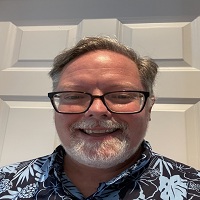
Title: Global Warming Due to Biomaterials ?
Plenary Talk
Prof. Thomas J. Webster
Interstellar Therapeutics, USA
Abstract
Global warming is a significant societal problem leading to an increase in Earth temperature of 0.08 degrees C every decade since the 1880s, which has even accelerated more over the past several decades. While there is a large debate over the cause of global warming, it is clear that when one thinks of global warming, poluution from non-medical industries come to mind, such as oil, automobile, airline, and other industries. Yet, the medical device industry uses some of the materials (such as titanium, stainless steel, and polymers) as such industries typically blamed for global warming. Over the past decade, there has been an explosion of research concerning the fabrication, use, and properties of natural biomaterials. Plants, proteins, and cells are just some of the many natural materials being explored to reduce infection, treat cancer, and grow tissues. Despite such promise, few of these natural materials have been commercialized and further, scientists have speculated whether using natural materials actually decreases pollution due to lower natural material yield needed for biomaterial applications. This invited talk will discuss the promises and pitfalls of the use of natural materials in medicine, covering in vitro and in vivo results for various applications in medicine, and will present what is needed for the field to continue to grow.
Biography
Thomas J. Webster’s (H index: 107; Google Scholar) degrees are in chemical engineering from the University of Pittsburgh (B.S., 1995) and in biomedical engineering from RPI (Ph.D., 2000). He has served as a professor at Purdue (2000-2005), Brown (2005-2012), and Northeastern (2012-2021) Universities and has formed over a dozen companies who have numerous FDA approved medical products currently improving human health. He has directed numerous international centers in biomaterials and has graduated over 200 students with over 750 peer-reviewed publications. Prof. Webster is a fellow of over 8 academic societies and is a Clarivate Top 0.1% Most Influential Researcher (Pharmacology and Toxicology), SCOPUS Highly Cited Researcher (top 1% citations for materials science and mixed fields) as well as a Public Library of Science (PLoS) World Top 2% Scientist by Citations in all fields.
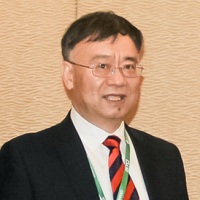
Title: The Extended Galerkin/Rayleigh-Ritz Method for Approximate Solutions of Nonlinear Vibration Equations
Plenary Talk
Prof. Ji Wang
Ningbo University, China
Abstract
An extension has been made with the popular Galerkin/Rayleigh-Ritz method by integrating the weighted equation of motion or Lagrangian functional over the time of one period of vibrations to eliminate the harmonics from the deformation function. A set of successive equations of coupled higher-order vibration amplitudes is obtained, and a nonlinear eigenvalue problem is solved for the frequency-amplitude dependence of nonlinear vibrations of successive displacements. The subsequent solutions of vibration frequencies and deformation are actually consistent with other successive approximate methods such as the traditional harmonics balance method. This is a novel extension to Galerkin/Rayleigh-Ritz method which has wide applications in approximate solutions particularly for vibration problems in solid mechanics. This extended Galerkin/Rayleigh-Ritz method can also be utilized for the analysis of free and forced nonlinear vibrations of structures as a new technique with significant advantages.
Biography
Professor Ji Wang is the founding director of the Piezoelectric Device Laboratory, Ningbo University. Professor Ji Wang also held visiting positions at Chiba University, University of Nebraska-Lincoln, and Argonne National Laboratory. He received his PhD and Master degrees from Princeton University in 1996 and 1993 and bachelor from Gansu University of Technology in 1983. Professor Wang has been working on acoustic waves and high frequency vibrations of elastic and piezoelectric solids for resonator design and analysis with several US and Chinese patents, over 200 journal papers, and frequent invited, keynote, and plenary presentations in major conferences around world.
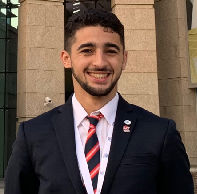
Title: Evaluation of 3D-printed recycled PEEK as main CubeSat structure material
Invited Talk
Fahd Moumni
MicroOrbiter Inc., Tokyo, Japan
Abstract
The CubeSat industry in the field of space is one of the fastest growing industries. This high productivity raises concerns about environment sustainability, especially with the cost of in-orbit launches. Sustainability can be achieved for instance through modifications of the CubeSat structure, that is generally aluminum. Research suggests other advanced materials such as PEEK (PolyEtherEtherKetone), a material that withstands the space environment conditions. PEEK has good thermal, electrical, optical and mechanical properties for the needed space application. Adding to its lightweight, 3D-printed PEEK structures for CubeSats have also been explored, enhancing energy and cost savings. This work purpose is to identify the reliability of an eco-friendly material for CubeSat structures with analysis. 3D recycled PEEK is the main suggestion and evaluating it as candidate is done through Finite Element Model (FEM) Analysis with rocket launch conditions implemented. The software used is Fusion360 (from AutoDesk) and the CubeSat model is a 1 Unit (1U). As pure PEEK shows redundancy and reliability on simulations, recycled PEEK is equally expected to succeed in the computational test. As per the success of the FEM simulations, recycled PEEK could be adopted as one of the main answers to achieve environment sustainability through space structures. Further studies could involve the implementation of specific 3D-printing simulations, as for real case experiments.
Biography
Fahd Moumni has completed his Double Masters degree in both Materials Sciences and Mechanical & Space Systems Engineering, from the Université de Lorraine (France) and the Kyushu Institute of Technology (Japan), respectively. Fahd Moumni is a member of MicroOrbiter Inc., specialized in the CubeSat industry. He has been awarded the IAF ESL award for his achievements as a young professional in the space field.
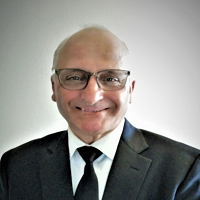
Title: Lithium-ion batteries challenges for the 21st century
Plenary Talk
Prof. Rachid Yazami
Founding Director of KVI PTE LTD, Singapore
Abstract
Lithium-ion batteries (LIB) are dominating the worldwide battery market in all areas of applications such as in mobile electronics, electricvehicles, medical, aerospaceand energy storage.It is projected that the LIB production will grow 20%/yearto reach ~ 2TWh and $200B value by 2030.
Despite outstanding performances in energy density (Wh/kg), power density (W/kg) and lifespan (years, cycle #) LIB are still facing challenges regardingsafety, fast charging,and materials scarcity,which may impede their market penetration.
In this presentation we will discuss some of our innovative technologies to address the LIB challenges including the entropy and enthalpy based internal short-circuit detection, which is known to be a thermal runaway trigger, the non-linear voltammetry ultra-fast charging technology and the materialsrecycling engineering.
Biography
Professor Yazami is the inventor involved in over 150 patents related to battery technology, including the graphite anode used in most commercial lithium ion batteries an over $100b business. Dr. Yazami co-authored about 250 articles in peer-reviewed journals, book chapters and international meeting proceedings. Yazami served a visiting associate in Materials Science and in Chemistry at the California Institute of Technology (Caltech) in collaboration with JPL/NASA together with being the President of the International Battery Association (IBA). Dr. Yazami joined the Nanyang Technological University in Singapore (NTU) where he held the Nanyang Visiting Professor in Materials Science position together with being a PI of battery research at the TUM Create Center of e-mobility, jointly managed by NTU and the Technological University of Munich. In recognition of his invention of the graphite anode in lithium ion batteries, Yazami received several scientific awards, including from NASA, NATO, IBA, JSPS, Hawaii Battery Conference, the IEEE and the Draper Prize in 2014 considered as the Nobel Prize in Engineering. In 2014 Yazami was decorated by HM the King of Morocco. He is the recipient of the French Legion of Honor in 2016 and of the “2018’ Takreem Award” in Science and Technology Innovation, considered the Arab Scientist of the Year Award. Recently Prof. Rachid was the recipient of the 2019’ Arab Investor Award during a Forum held in the UNESCO headquarters in Paris together with the Mohamed Bin Rached Medal of Scientific Distinguishment of Life Achievement given by the Ruler of Dubai in 2020.
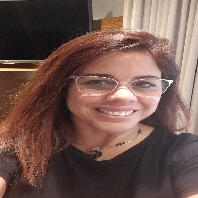
Title: Recent Advances in Oxygen Scavenger (OS) Additives to Increase the Circularity of Multilayer Packaging Films
Invited Talk
Lucía Pérez Amaro
Laboratorio Materiali Polimerici Ecocompatibili - LMPE Srl S
Abstract
The present work is focused on the development of a multifunctional material suitable for the production of active packaging for food packaging applications. The need underlying the study is the extension of the shelf-life of fresh food and the improvement of the recyclability of the package, in line with Circular Economy principles and contributing to Objective #2 od the SDGs. Particular attention was posed on the production of multilayer films based on LDPE coupled with ionic thermoplastic polymers. LDPE is widely used in the packaging industry due to its high moisture barrier, however the lack of ionic interactions such as dipole-dipole made that this polymer presents poor barrier properties against diatomic oxygen (O2).
The OS additive consists of solid layered materials, better defined as layered double hydroxide (LDH), chemically modified with active substances toward diatomic oxygen which are able to consume the residual oxygen trapped inside the packaging. The main part of the research work was based the synthesis and characterization (by TGA-DTG, FT-IR, XRD, SEM) of two OS additives (one inorganic LDH MgAl-sulfite and an hybrid inorganic / organic LDH MgAl-erythorbate) ending with the evaluation of the Oxygen Scavenger featuring of the OS additives by using the OpTech instrument (Ametek – Mocon).
Acknowledgment
The research was partially supported by Innovation Projects of the Foundation for Agricultural Innovation (FIA) with the project “Preparation of a nanostructured monolayer film with antioxidant and antimicrobial properties (Oxygen Scavenger and silver particles) to increase the shelf life of foods” (PYT-2020-0214). Particular, acknowledgment to Smart Plastic Technologies – USA for the acquisition and allocation inside the LMPE facilities of the Optech O2 instrument.
Biography
Lucía G. Pérez Amaro has a master’s degree in Materials Engineering from the Simón Bolívar University (USB) - Caracas, Venezuela, and a doctorate from the University of Concepcion Chile and a post doctorate from the University of Pisa (UNIPI) - Pisa, Italy. Eng. Pérez Amaro is currently Head of R&D at the Innovative Start-up LMPE Srl SB Lucca - Italy (5 years), has 10 years of experience in polymeric materials (CNR, INSTM, UNIPI – Italy), and 3 years of experience in the Oil&Gas sector (PDVSA – Venezuela). Eng. Pérez Amaro has 15 scientific articles, 3 international patents, 2 national patents, 2 book chapters and 16 communications at international conferences.

Title: Prospects and challenges for MXenes bioactivity in vitro
Keynote Talk
Prof. Agnieszka Maria Jastrzębska
Warsaw University of Technology, Poland
Abstract
The past few years have witnessed significant development in the chemistry and potential biological applications of two-dimensional (2D) materials. Innovative 2D carbides, nitrides, and carbonitrides of early transition metals, called MXenes, have also been extensively studied for several years on their applications in human health protection. It is currently accepted that the specific functionalities of the MXenes can result in a wide spectrum of bio-activities. In this context, MXenes are presently being carefully studied, with strong attention to mechanisms of action and biocompatibility features. We already know that MXenes exhibit different cellular effects which can be additionally induced by multiple external or internal factors. These effects are strictly dependent on MXenes structure, chemical composition, and surface characteristics which positively support their interesting potential in nano-therapies.
In fact, MXenes are promising anticancer agents that can inhibit the proliferation of cancer cells, induce oxidative stress, and even influence the cell functioning and cell cycle by inducing programmed cellular death (apoptosis). On the other hand, such a wide range of bio-activities may inevitably cause unexpected toxicological effects that require a broader understanding. The obtained results clearly indicate that in this respect, the surface chemistry of MXenes has a significant impact on their biological properties. This is closely related to the synthesis methods and oxidizing properties, leading to potentially toxic superficial metal oxides.
In the case of MXenes, the challenge now relates not only to obtaining the needed biological properties but also to understanding and maintaining (stabilizing) them in the desired environment. The presented studies will shed some light on the issues raised above and outline new directions in the toxicology of the MXene phases. They are focused on elucidating antiproliferative, pro-oxidative, and pro-apoptotic mechanisms of action.
The presented results were accomplished thanks to the subvention funds allotted by the National Science Centre, within the framework of the research project ‘SONATA BIS 7’ no. UMO‑2017/26/E/ST8/01073.
Biography
Agnieszka Maria Jastrzębska is a Professor of the Warsaw University of Technology (WUT). She leads an interdisciplinary research team at the Faculty of Materials Science and Engineering, Department of Ceramic and Polymer Materials, WUT. Her original research works are concentrated around nanotechnology for bioactive materials with multifunctional hybrid nanocomposite structures. They were conducted in numerous national and international projects and received many prestigious awards, including Minister of the Education and Science Award for industrial implementations or Polish Intelligent Development award. The current fields of interest comprise biomedical, environmental, and catalytic applications of novel 2D materials within emphasis given to their sustainability and toxicological effects observed at relevant exposures.

Title: Mechano-electrically active biomaterials for cardiac tissue engineering
Keynote Talk
Dr. Clarisse Ribeiro
University of Minho, Portugal
Abstract
Cardiovascular diseases are the major cause of death throughout the world. Despite the advances in treatment strategies, there is no cure for myocardial infarction as the heart has a very limited regeneration capacity. Considering the drawacks of heart transplantation, studies in regenerative medicine aim to new therapeutic alternatives with lower cost and higher efficacy for myocardial regeneration through tissue engineering (TE).
Active materials with controlled cell-materials interaction represent a recent paradigm in tissue engineering (TE) applications. Among the most important stimuli influencing cell behavior are the electrical and mechanical. In fact, electromechanical stimuli are evidentin the heart's functional microenvironment in vivo. In this way, piezoelectric materials with the ability to transform mechanical solicitations into electrical variations seem suitable to support cardiac TE. Related approaches have already been successfully used for bone TE and to improveregeneration. This talk will summarize the main materials, properties, processing technologies and applications of piezoelectric materials to tissue engineering with special focus on cardiac tissue regeneration.
Biography
Clarisse Ribeiro graduated in Biomedical Engineering (master in Electronic Medicine) in 2008, receiving PhD in Physics in 2012 (both at Minho University-Portugal). She is an Assistant Researcher at the Physics Center of Universities of Minho and Porto, integrating the "Functional and smart materials and surfaces for advanced applications" line. Her research has been focuss on the understainding and modulation of cell-materials interactions, working on development of funtional biomaterials/nanostructured materials, smart scaffold and cell culture for active tissue engineering with leading publications and innovations in the different areas. Furthermore, she has developed innovative bioreactors taking advantage of the developed materials to create suitable cell microenvironments.
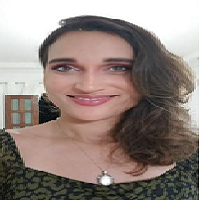
Title: Design methodology for composite structures by controlling and optimizing the evolution of polymer properties during processing
Invited Talk
Stephanie G Nunes
Riga Technical University, Latvia
Abstract
For a more comprehensive design of composites, optimization not only of the final performance of the product but also the material property evolution during manufacturing is required. The polymer matrix undergoes liquid-rubbery-glassy state transition with continuous physical and chemical changes during molding, and a better understanding of this phenomenon in necessary. Indeed, constitutive modelling and optimization of this process is of growing importance nowadays due to introduction of fast-curing polymers in the automotive industry and the challenge to enable expansion of the envelope of environmental applications (e.g., high temperatures in composites parts), where internal residual stresses can lead to shape-distortion, accelerated aging and microdamage. The strategic goal of this research is to develop design tools to minimize these undesirable effects, optimizing manufacturing processes based on mechanism-based simulations, in contrast to trial-and-error procedures currently used by most industries. Thus, a methodology for reliable accelerated experimental characterization of thermoset polymers during their evolution from the rubbery to the glassy state has been developed, using experimental results for dentification of proper models and generation of input data.
Biography
Stephanie Nunes is a senior researcher at Riga Technical University (RTU/Latvia) and a collaborative researcher at Luleå Technical University (LTU/Sweden). She has a Ph.D. in Material Engineering from Federal University of Rio Grande do Sul (UFRGS/Brazil) in 2018. Dr. Nunes current research topic is “Design methodology for composite structures by controlling and optimizing the evolution of polymer properties during processing”, focusing on viscoelasticity and viscoplasticity studies. Her experience in research is mainly in Materials Engineering, especially in structure, processing and properties of polymeric composites.
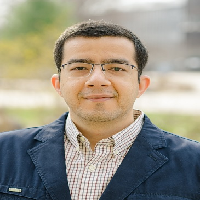
Title: The strategies to avoid constraints of the zinc-based alloys in absorbable stenting applications
Invited Talk
Morteza S. Ardakani
Michigan Technological University, USA
Abstract
Zinc-based alloys have been introduced as new absorbable materials for biomedical implants due to their promising corrosion rate and biocompatibility. However, their poor mechanical properties and associated instabilities currently prevent their utilization in load-bearing temporary medical applications including a cardiovascular stent and/or bone fixture. Their natural aging, strain softening, and rate sensitive behavior after extensive plastic deformation during fabrication processes remain as challenges. These properties negatively affect the elongation to failure, creep and fatigue resistance of the formulated alloys. This talk focuses on these unsolved concerns and the development of strategies to avoid them. The mechanical instabilities can also develop during storage at room temperature, due to the occurrence of the natural aging in the fully recrystallized and refined structures. We demonstrated that additional alloying elements decelerate the natural aging and reduce the instabilities during the required functionality period of the temporary medical devices. Additionally, a new approach for resolving the strain softening and strain rate sensitivity of worked alloys is introduced. That is, performing a post-deformation heat treatment lead to minimizing the rate sensitivity and recovering the strain hardening in tensile behavior of the thermo-mechanically processed alloys. Our approach indicates the impacts of the grain size and fraction of the secondary phase on the deformation behavior and opens up a new window in utilization of zinc-based alloys in load-bearing applications.
Biography
Morteza Shaker Ardakani completed his B.Sc. degree in Materials Science and Engineering, followed by M.Sc. in Engineering Materials-Design and Selection in Iran from Sharif University of Technology. He worked as lecturer and metallography lab supervisor for two years. He also worked as melting expert in Chadormalu Steel Making Plant in Iran for a few months. He joined Michigan Technological University in the Fall of 2017 to pursue his studies. His focus is understanding the fundamental of the mechanical behavior of Zn based alloys for the bioabsorbable implant applications under the guidance of Professors Kampe and Drelich.

Title: Undoped and Ce-Doped NaSICON Enabled by Mechanical-Activation-Enhanced-Reaction
Keynote Talk
Prof. Shan-Ju Chiang
North Central College, USA
Abstract
NaSICON (Natrium SuperIonic CONductor) is a promising sodium ion conductor that can be used in solid-state batteries, sensors, and fuel cells. However, the high manufacturing cost, low phase purity, and safety has limited the development of sodium solid-state batteries. In this study, we perform an innovative process to synthesize and densify the undoped and Ce-doped NaSICON. Our results show that NaSICONs with relative density higher than 97% can be achieved through one mechanical alloying process and one heat treatment, which significantly lower the manufacturing cost and improve the ionic conductivity at room temperature. The ionic conductivity measured by electrochemical impedance spectroscopy is improved due to the densification and the larger Na-ion conduction channel in the structure. In addition, mechanical alloying is found to have profound effect on the sintering process. It not only suppresses the formation of secondary phases but also lower the energy barrier of mobile Na-ions in the conduction channel. Most importantly, this work provides an efficient route to synthesize NaSICON-type electrolytes with high conductivity and paves a new way to enable cheaper and safer sodium-based solid-state batteries.
Biography
Dr. Chiang received her Ph.D. degree in Materials Science and Engineering from Illinois Institute of Technology in 2019. She is an Assistant Professor of Mechanical Engineering at North Central College, USA. Dr. Chiang sees her research as part of the broader effort in the sustainable energy to study the interaction linking human society, environment, and materials development in the contemporary world. Her research includes ceramic-based electrolytes, and Na-ion battery materials to provide a safe and reliable grid-scale energy storage for next generation batteries. In addition, Dr. Chiang is committed to disrupting national trends in engineering with respect to women and men of color receiving engineering degrees, and to make North Central College a national model for equity and excellence in engineering!
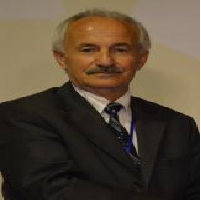
Title: Shape Reversibility and the Role of Lattice Reactions in Shape Memory Alloys
Invited Talk
Prof. Osman Adiguzel
Firat University, Turkey
Abstract
Shape memory alloys take place in class of smart materials with adaptive properties and stimulus response to the external changes, by exhibiting a peculiar property called shape memory effect. This phenomenon is characterized by the recoverability of two certain shapes of material at different temperatures. Shape memory effect is initiated by cooling and deformation and performed thermally on heating and cooling. Therefore, this behavior can be called thermoelaticity. This deformation is plastic deformation, strain energy is stored in the material and released on heating by recovering the original shape. Shape memory alloys are crystalline materials and shape memory effect is result of two successive crystallographic transformations, thermal and stress induced martensitic transformations. Thermal induced transformation occurs on cooling along with lattice twinning and ordered parent phase structures turn into twinned martensite structure; and twinned structures turn into detwinned martensite structure by means of stress induced martensitic transformation by stressing material in martensitic condition. Thermal induced martensitic transformation is lattice-distorting phase transformation and occurs as martensite variants with the cooperative movement of atoms in <110>- type directions on {110}-type planes of austenite matrix which, by means of shear-like mechanism. These alloys exhibit another property called superelasticity, which is performed by stressing and releasing the material in the elasticity limit at the parent phase region. The material recovers the original shape after releasing by exhibiting elastic material behavior. Superelasticity is performed in non-linear way, unlike normal elastic materials, loading and unloading paths in stress-strain diagram are different, and hysteresis loop reveals energy dissipation. Superelasticity is also result of stress induced martensitic transformation and ordered parent phase structures turn into the detwinned martensite structure by stressing.
Copper based alloys exhibit this property in metastable β-phase region. Lattice invariant shears and twinning are not uniform in these alloys, and the ordered parent phase structures martensitically undergo the layered structures with thermal induced transformation.
In the present contribution, x-ray diffraction and transmission electron microscope studies were carried out on two copper based CuZnAl and CuAlMn alloys. X-ray diffraction profiles and electron diffraction patterns exhibit super lattice reflections inherited from parent phase due to the displacive character of martensitic transformation. X-ray diffractograms taken in a long-time interval show that diffraction angles and intensities of diffraction peaks change with the aging time at room temperature, and this result leads to the rearrangement of atoms in diffusive manner.
Biography
Dr Adiguzel graduated from Department of Physics, Ankara University, Turkey in 1974 and received PhD- degree from Dicle University, Diyarbakir-Turkey. He has studied at Surrey University, Guildford, UK, as a post-doctoral research scientist in 1986-1987, and studied on shape memory alloys. He worked as research assistant, 1975-80, at Dicle University and shifted to Firat University, Elazig, Turkey in 1980. He became professor in 1996, and he has already been working as professor. He published over 80 papers in international and national journals; He joined over 100 conferences and symposia in international and national level as participant, invited speaker or keynote speaker with contributions of oral or poster. He served the program chair or conference chair/co-chair in some of these activities. In particular, he joined in last seven years (2014 - 2020) over 80 conferences as Keynote Speaker and Conference Co-Chair organized by different companies. He supervised 5 PhD- theses and 3 M.Sc.- theses. Dr. Adiguzel served his directorate of Graduate School of Natural and Applied Sciences, Firat University, in 1999-2004. He received a certificate awarded to him and his experimental group in recognition of significant contribution of 2 patterns to the Powder Diffraction File – Release 2000. The ICDD (International Centre for Diffraction Data) also appreciates cooperation of his group and interest in Powder Diffraction File.

Title: Recycling of Post-Consumer Plastic Packaging Waste: Challenges and Opportunities
Plenary Talk
Prof. Mervat El-Hoz
CEO, Environmental Engineering Consulting, Lebanon
Abstract
Global production of plastic was about 367 tons in 2020, compared to 270 million tons in 2010. Plastic is used in a variety of applications worldwide every day, especially as a packaging material. Plastic packaging is made up of long-chain polymers, which, due to quality of the recovered waste fraction, can be reused and recycled many times, retaining their functional properties, and reducing the need for disposal. This thus contributes to the development of the circular economy. Packaging now accounts for 42% of the global polymer sector. However, some ends up as waste in open dumps, landfills or incinerators. Most of these polymers are not biodegradable and cause serious environmental problems. Therefore, effective waste management is essential to combat pollution. This study describes the current state of plastic packaging waste, discusses the challenges associated with recycling plastic packaging post-use by mechanical, chemical and energy recovery processes used to manage these materials, and provides sustainable solutions for value-added products. The study concluded that mechanical recycling is the best alternative if the waste quality is acceptable, to produce other products with similar properties to commercial plastics in terms of monomer type and origin, and to achieve consumer and market acceptance of recycled plastic packaging. The sustainability of mechanical recycling must take into account the following factors: collection, sorting, technologies and reprocessing of recyclable plastic packaging, while ensuring economic incentives, standards and regulations, as well as associated social and environmental aspects, as part of an integrated and long-term plan.
Biography
Experienced Professor with a demonstrated history of working in the higher education and consulting industry. An Environmental Engineer skilled in Waste Management, Water and Wastewater Treatment, Water Resource Management, & Air Pollution Control. Strong education professional graduated from University of Sydney, Australia; and Middle East Technical University, Turkey.
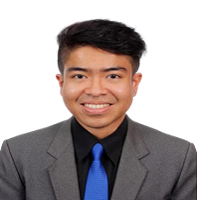
Title: Mesophase Transition and Fire Retardancy Behaviour of Hexasubstituted Cyclotriphosphazene Molecules Containing Different Terminal Groups
Invited Talk
Dr. Zuhair Jamain
Universiti Malaysia Sabah (UMS), Malaysia
Abstract
A series of hexasubstituted cyclotriphosphazene molecules with ester and azo linking units was successfully synthesized and characterized. The reaction of cyclotriphosphazene with methyl 4- hydroxybenzoate formed a hexasubstituted cyclotriphosphazene benzoate. Furtherreduction formed hexasubstituted cyclotriphosphazene benzoic acid, which reacted with a series of 4-(4- substituted-phenylazo)-phenol to form a series of new hexasubstituted cyclotriphosphazene. The homologues in the same series contained different terminal substituents such as heptyl, nonyl, decyl, dodecyl, tetradecyl chains; and other substituents such as hydroxy, benzoic acid, chloro, nitro and amino groups. These compounds were characterized using Fourier Transform Infrared spectroscopy (FT-IR), Nuclear Magnetic Resonance spectroscopy (NMR) and CHN elemental analysis.Mesophase texture of these compoundswere determined using Polarized OpticalMicroscope (POM) and their mesophase transition were further confirmed using Differential Scanning Calorimetry (DSC). Observation under POM showed that compounds with alkylated and chloro substituent exhibited nematic and smectic texture. Meanwhile, Limiting Oxygen Index (LOI) test was used to determine the fire retardant properties of these compounds. In this series, compoundscontaining nitro terminalgroup showed a higher LOI value (27.53%)compared to other homologues due to nitro groups' electron withdrawing properties, which induced the properties of fire retardant.
Biography
Dr. Zuhair Jamain has completed his PhD from Universiti Sains Malaysia, Penang, Malaysia, and is currently a senior lecturer in Universiti Malaysia Sabah, Malaysia. He has published more than 20 papers in reputed journals and has been serving as a reviewer for several journals. Dr. Zuhair’s research interests focus on synthesizing and modifying organic compounds for various applications such as liquid crystal, fire retardant, and dielectric materials. Moreover, he has been involved in various research projects as a principal investigator and collaborator.

Title: HYBRID POLYMER NANOFIBER-BASED TRIBOELECTRIC-PIEZOELECTRIC HYBRID NANOGENERATORS
Keynote Talk
Dr. Ayse Bedeloglu
Bursa Technical University, Turkey
Abstract
Hybrid nanogenerators, which are energy-recovering devices that combine at least two energy conversion mechanicsms, have been extensively explored in recent years (piezoelectric-triboelectric, piezoelectric-pyroelectric, triboelectric-pyroelectric etc.). However, especially in triboelectric-piezoelectric hybrid devices, a lack of durability is a typical issue. We demonstrated highly compressed and efficient hybrid nanofiber-based hybrid nanogenerators in this study. In the construction of nanofibrous membranes, polyvinylidene fluoride (PVDF) was employed as the piezoelectric material and thermoplastic elastomer was used as the counter material to PVDF. The output signals were observed under compression test with the nanofibrous mats sandwiched between two electrodes; hence, the effect of fiber morphology on output signals was investigated. The polymer solution concentration influenced the nanofiber shape of the samples. The best morphology-output combination revealed that varied quantities of graphene oxide (GO) were used to make nanofibrous mats. In order to reduce GO flakes in 0.5 M hydrazine hydrate, GO doped hybrid nanofibers were reduced. Finally, compression testing was used to characterize GO doped hybrid nanofiber-based nanogenerators. With 0.7 percent GO doping, the maximum voltage output of nanogenerators was 3.24 V peak to peak.
Biography
Ayşe ÇELİK BEDELOĞLU had her PhD from Textile Engineering Department, Dokuz Eylül University, Turkey in 2009. Since 2013, Prof. BEDELOĞLU is working in Polymer Materials Department of Bursa Technical University, Turkey. Her study areas are smart materials, photovoltaics, nanogenerators, phase changing materials, nanocomposites, fiber-reinforced composites, and nanomaterials synthesis and characterization. She is also currently working as the Vice Rector of Bursa Technical University and Head of Polymer Materials Engineering Department.
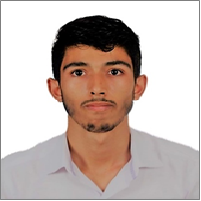
Title: Thermal analysis of a lithium-ion battery pack with hybrid thermal management system
Invited Talk
Badr Eddine Lebrouhi
Université de Pau et des Pays de l’Adour, Pau, France
Abstract
Electric vehicles are one of the potential zero-carbon alternatives for maintaining transportation independent from fossil energy resources, limiting carbon emissions during the use, and providing flexibility to the electrical grid. When the EV is running, one of the most critical elements to consider is the battery temperature. To maximise the potential of Li-ion cells, it needs to be maintained between 15 °C and 35° C. Indeed, an efficient battery thermal management system is critical to control the battery temperature during charging and discharging cycles. In this work, a thermal model was developed to analyse the thermal response and of the pack using hybrid thermal management system (HTMS) during charge/discharge process. The HTMS combines a pure PCM material as well as a liquid-cooling system to enhance the heat exchange. The findings show that the heat generated by battery charging and discharging is absorbed by the PCM, and that liquid cooling may significantly accelerate the process of PCM solidification during battery charging or rest. This might consequently decrease the maximum battery temperature and ensure uniform battery temperature while increasing battery efficiency and lifespan.
Biography
Badr Eddine Lebrouhi was born in July 1995 in Safi – Morocco, and received his Bachelor of Technology degree from University Cadi Ayyad (UCA-Morocco), in 2015. Three years later, Lebrouhi received his engineering degree from University Hassan 1st of Settat (UH1-Morocco). After, Lebrouhi started his international Joint Ph.D. program between Mohammed V University of Rabat (UM5 – Morocco), and the University of Pau and the Pays de l’Adour (UPPA-France). Lebrouhi’s research interests focus on Battery Thermal Management Systems, Electric and Hybrid Vehicles. Moreover, he has been involved in various research topics including Energy transition, Renewable Energy, Hydrogen Energy, and the Geopolitics of energy etc.
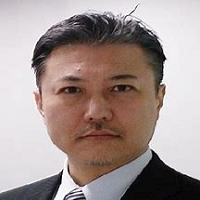
Title: Stereolithographic Additive Manufacturing of Ceramic Components with Mult-Dimensional Structures
Keynote Talk
Prof. Soshu Kirihara
Joining and Welding Research Institute, Osaka University, Japan
Abstract
In stereolithographic additive manufacturing (STL-AM), 2D cross sections were created through photo polymerization by UV laser drawing on spread resin paste including nanoparticles, and 3-D models were sterically printed by layer lamination. The lithography system has been developed to obtain bulky ceramic components with functional geometries. An automatic collimeter was newly equipped with the laser scanner to adjust beam diameter. Fine or coarse beams could realize high resolution or wide area drawings, respectively. As the row material of the 3D printing, nanometer sized metal and ceramic particles were dispersed into acrylic liquid resins at about 60 % in volume fraction. These materials were mixed and deformed to obtained thixotropic slurry. The resin paste was spread on a glass substrate at 50 μm in layer thickness by a mechanically moved knife edge. An ultraviolet laser beam of 355 nm in wavelength was adjusted at 50 μm in variable diameter and scanned on the spread resin surface. Irradiation power was changed automatically for enough solidification depth for layer bonding. The composite precursors including nanoparticles were dewaxed and sintered in the air atmosphere. In recent investigations, ultraviolet laser lithographic additive manufacturing (UVL-AM) was newly developed as a direct forming process of fine metal or ceramic components. As an additive manufacturing technique, 2D cross sections were created through dewaxing and sintering by UV laser drawing, and 3D components were sterically printed by layer laminations with interlayer joining. Though the computer aided smart manufacturing, design and evaluation (Smart MADE), practical materials components were fabricated to modulate energy and material transfers in potential fields between human societies and natural environments as active contributions to Sustainable Development to Goals (SDGs).
Biography
Soshu Kirihara is a doctor of engineering and a professor of Joining and Welding Research Institute (JWRI), Osaka University, Japan. In his main investigation “Materials Tectonics” for environmental improvements of “Geotechnology”, multi-dimensional structures were successfully fabricated to modulate energy and materials flows effectively. Ceramic and metal components were fabricated directly by smart additive manufacturing, design and evaluation (Smart MADE) using high power ultraviolet laser lithography. Original stereolithography systems were developed, and new start-up company “SK-Fine” was established through academic-industrial collaboration.
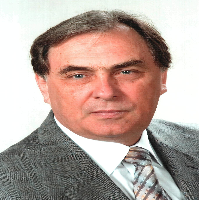
Title: Nanomaterials for Sensors
Keynote Talk
Prof. Valentyn Smyntyna
Odessa National I. I. Mechnikov University, Ukraine
Abstract
The results of research of metal oxide, semiconductors, porous materials nanoparticals as a different types of sensors and their application will be discussed. Nanosystems on the base of the quantum dots, plasmon metal nanoparticles are examined in respect to their application in biosensorics and medicine.
Current contribution examines the results of investigation of properties of nanostructures of composites of CdS type with the surface modified by superficial doping by atoms of metals, coating by non-organic shell with the purpose of improvement of luminescent properties of obtained nanosystems.
Scientific background of physical basics of processes led to increase of luminescence in nanoncomposits based on nano CdS with Ag and Au nanoparticles.
Experimental results of investigation of physical and chemical properties of nanostructured films of metal oxides SZnO and others and nanocomposites on their base as well as their application for sensor production, particularly, biosensors and immunosensors, are discussed.
Properties of different types of spars glasses and their efusional abilities for biologically active substances and liquids is examined in respect to their application in medicine and technique. Interconnection among superficial and optical phenomena in spar nanocomposites which enable control efucional processes there is discussed.
Biography
Valentyn Smyntyna is Full Professor, Doctor of Sciences in the field of Physics of Semiconductors, the Head of Department of Experimental Physics and scientific leader of many scientific projects in the field of sensorics focused, particularly, on semiconductor gas sensors. He is the author of over 120 articles in highly indexed scientific journals with Scopus h-index = 21.

Title: Synthesis and Flash Sintering of Zirconium Nitride Powder
Invited Talk
Suprabha Das
Florida International University, Miami, USA
Abstract
Zirconium nitride (ZrN) is a transition metal nitride of great interest due to its excellent physical and chemical properties. This study aims to synthesize ZrN fine powders by a facile and low-cost urea route that avoids the use of any solvent. ZrCl4 and urea mixtures were heat-treated up to 1600 ˚C in nitrogen gas. The products were characterized by XRD, SEM, TEM, EDS, and TGA. The effects of different processing parameters such as metal to urea molar ratio, heat treatment temperature, and dwelling time on the product phase and stoichiometry were studied to understand the synthesis method. In addition, synthesized ZrN powder was consolidated into near fully dense single-phase bulk ceramic with a homemade flash sintering setup. A constant DC electrical field of ~100 V/cm and pressure of ~14 MPa at room temperature triggered flash sintering without pre-heating, and the entire process finished in 200 secs. The composition, microstructure, density, hardness, and oxidation properties of the sintered pellet were also characterized
Biography
+91 9491 456 452
Door No.200, Immidhihalli Main Road, Whitefield-560066, Bangalore, India
About Us
Global Scientific Guild organizes conferences and webinars to promote quality research and real world impact in an atmosphere of true international co-operation between scientists, doctors, professors, practitioners, engineers and industry by bringing together the world class renowned personalities to discuss the latest developments and innovations at one common platform.